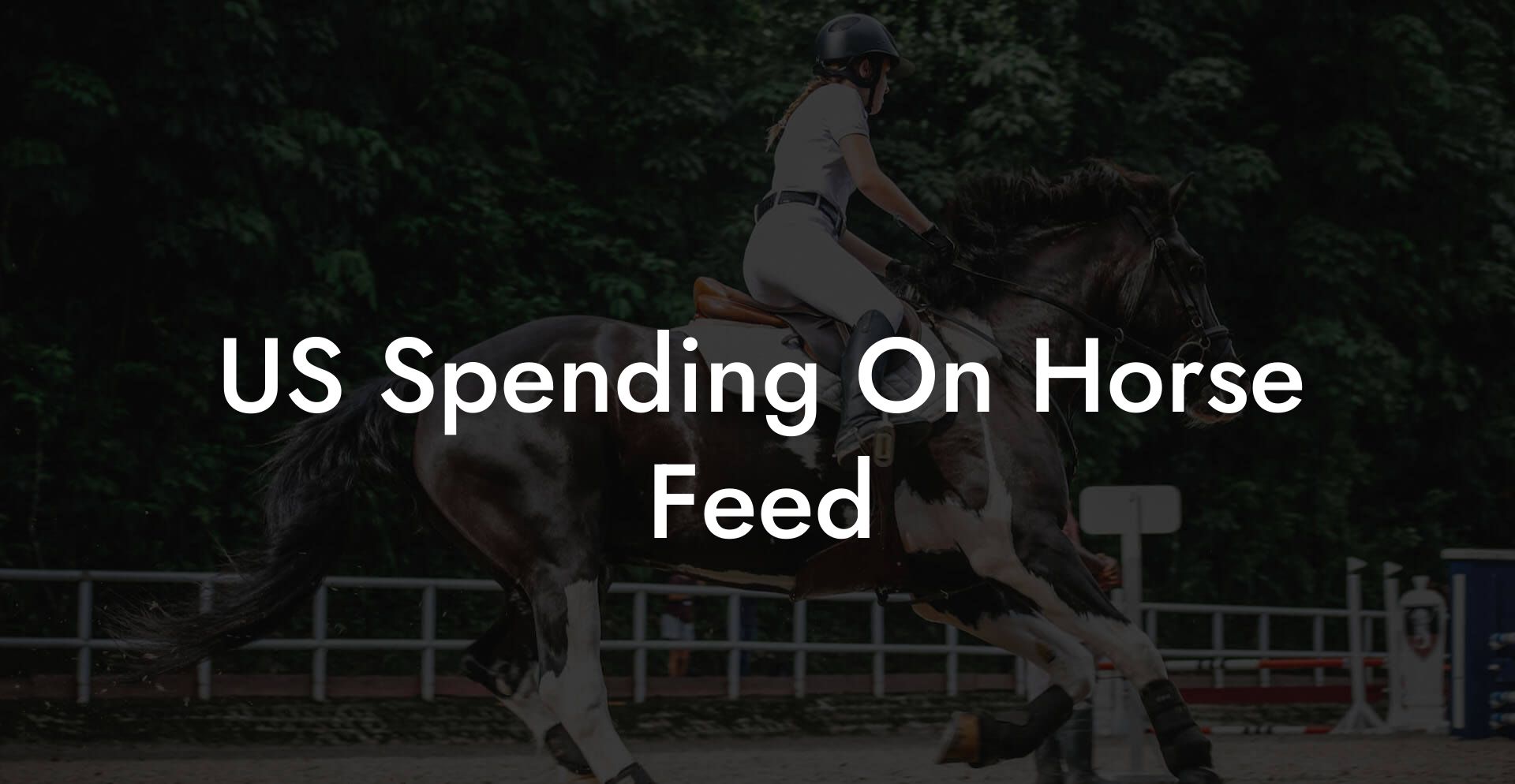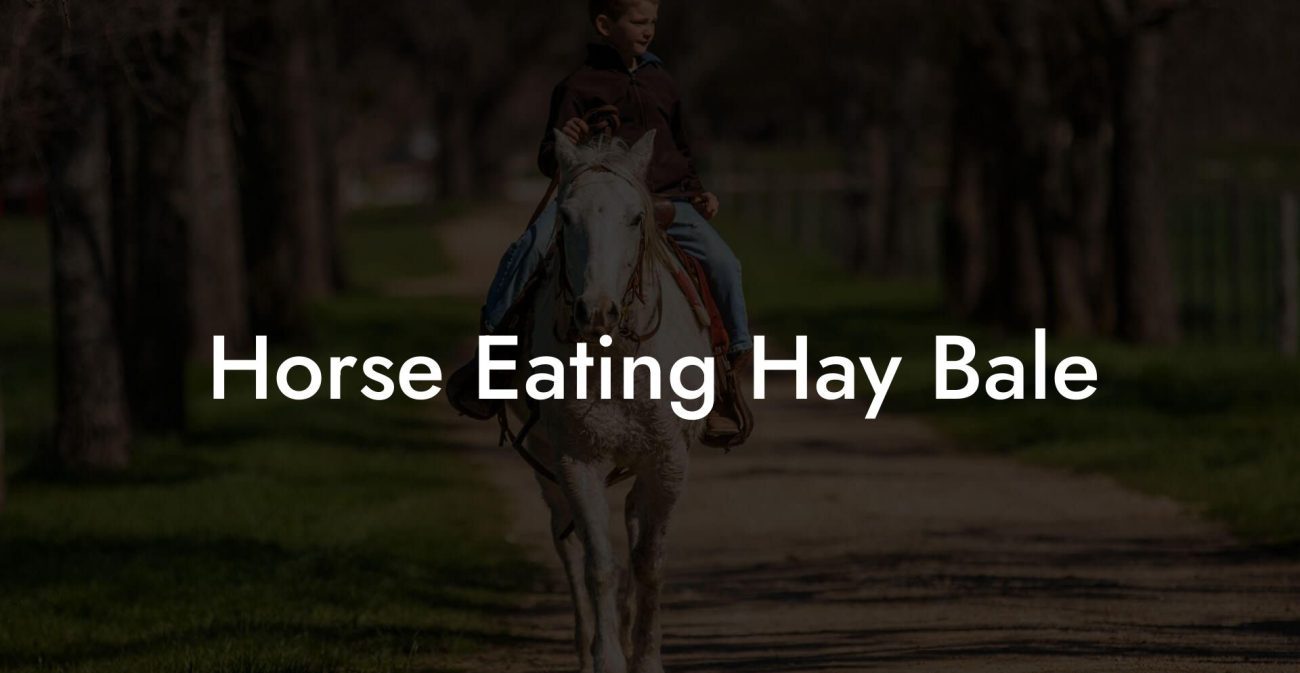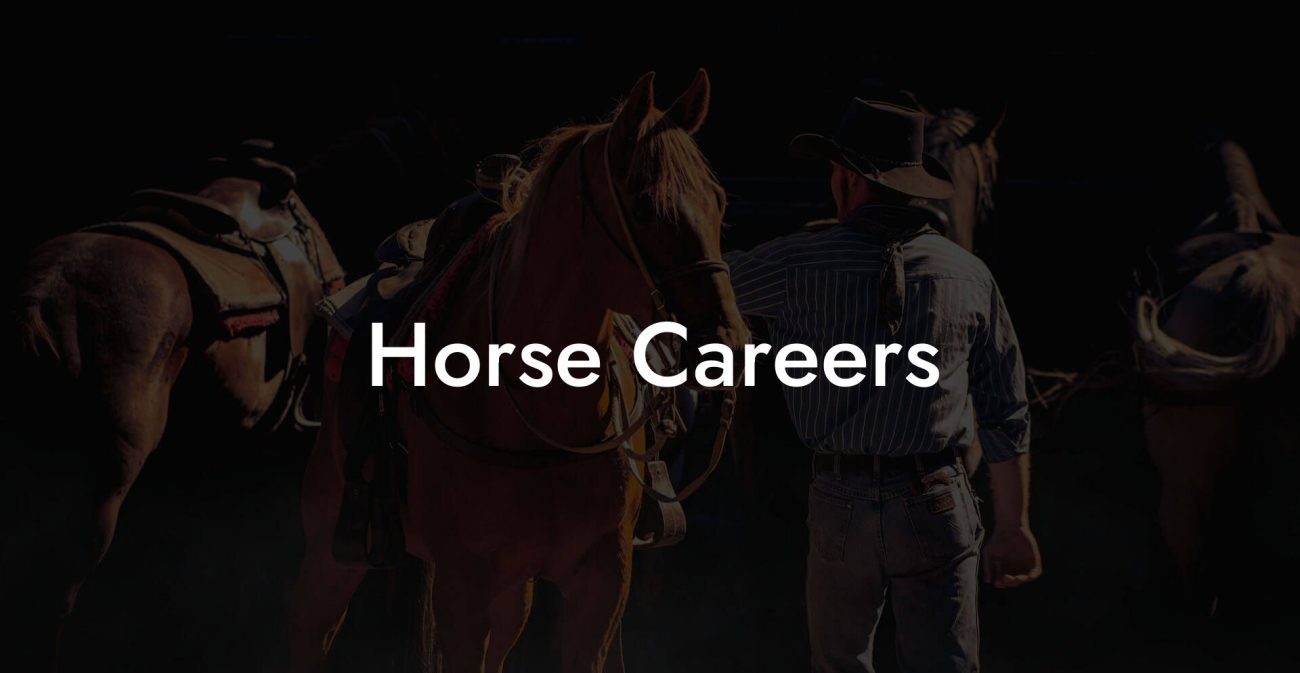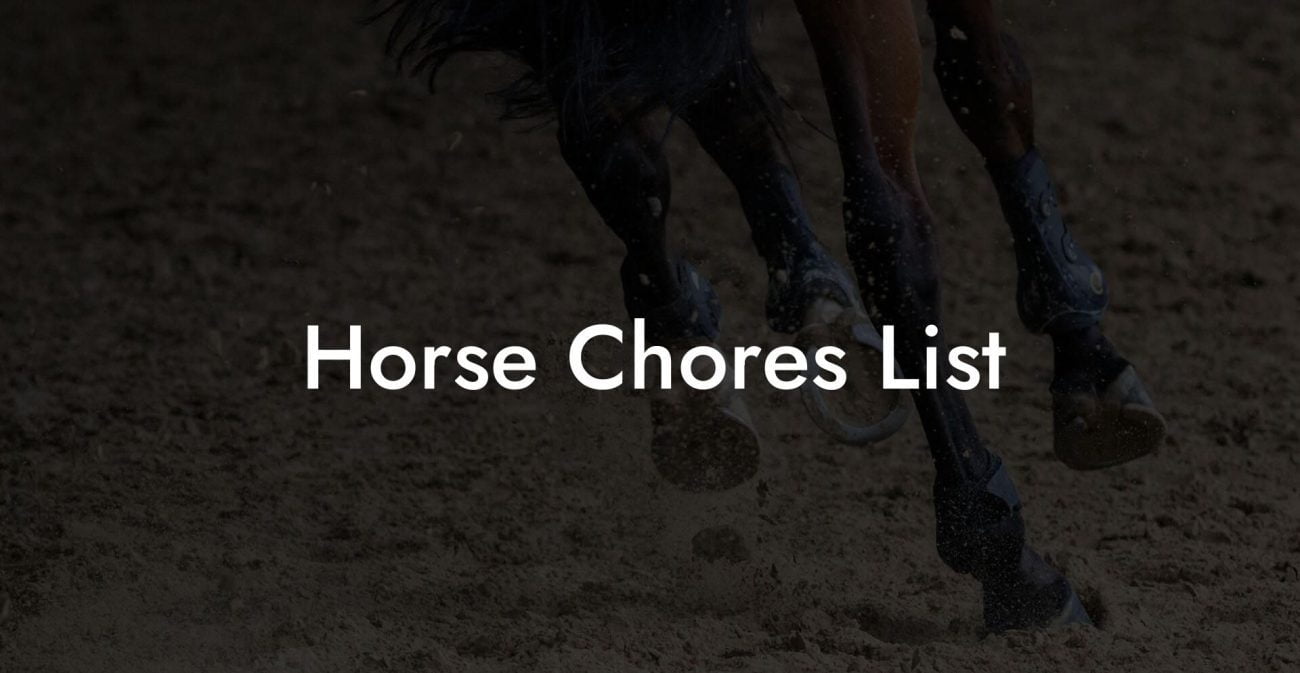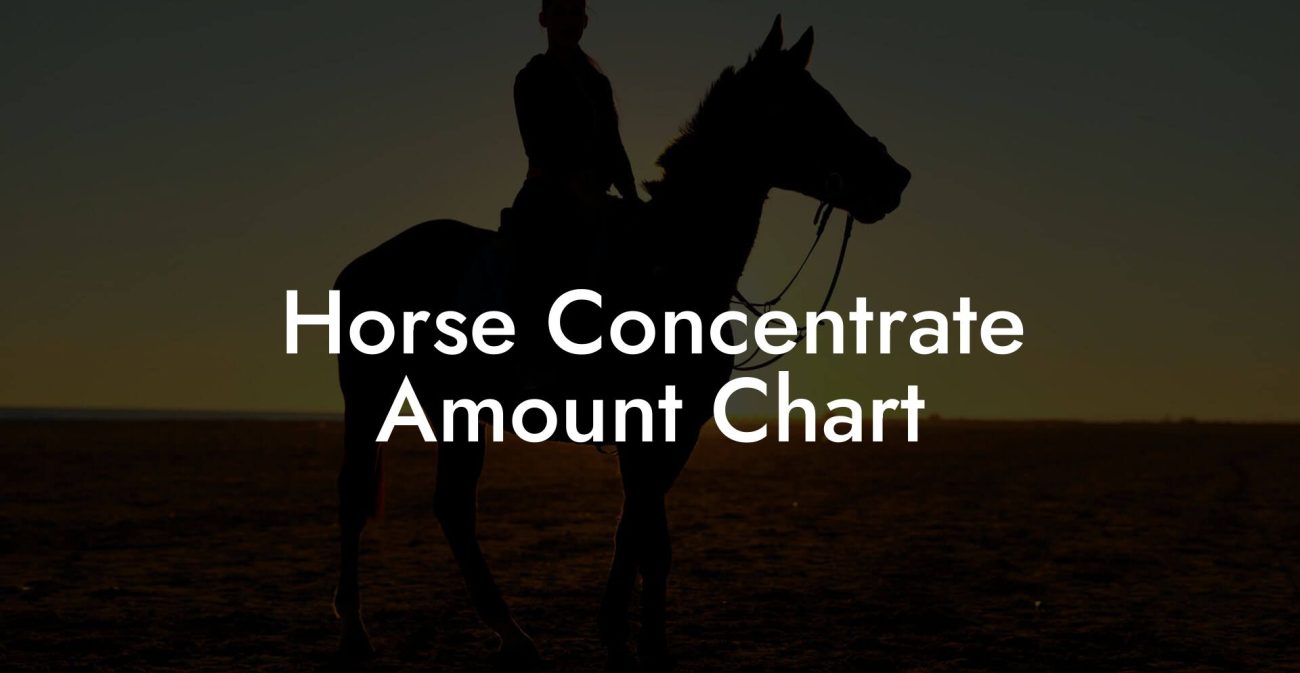Ever wondered how a seemingly simple bag of horse feed can turn into a heavyweight contender in the US economy? In a world where horses are more than just majestic creatures, they're partners in leisure, competition, and sometimes even therapy, the spending on horse feed reveals an intriguing tapestry of tradition, innovation, and downright savvy budgeting. Whether you're a seasoned equestrian, a Gen-Z trendsetter exploring sustainable lifestyles, or just someone curious about where every dollar goes in the world of equine care, buckle up for a wild ride through the ins and outs of US spending on horse feed.
Quick Links to Useful Sections
- Understanding the Landscape of US Spending on Horse Feed
- The Horse Feed Industry: A Multifaceted Snapshot
- Factors Driving US Spending on Horse Feed
- Sustainable Choices and Trends in Horse Feed
- Nutritional Value: Premium vs. Budget-Friendly Horse Feeds
- Regional Differences: From the Heartland to the West Coast
- Economic Trends Impacting the Horse Feed Market
- Tips for Managing Horse Feed Costs: Budget-Friendly Strategies
- 1. Bulk Buying and Storage Tips
- 2. Seasonal Adjustments
- 3. Mixing Feed Types
- 4. Partnering with Local Farms
- 5. Regular Nutritional Assessments
- Integrative Insights: Innovation and Tradition in Equine Nutrition
- Resources and Community Support: Your Next Steps
- Economic and Cultural Insights into the US Horse Feed Market
- Success Stories: Riding the Wave of Smart Feed Spending
- FAQ: Your Most Pressing Questions Answered
- Your Journey to Optimized Equine Nutrition and Smart Feed Spending
Understanding the Landscape of US Spending on Horse Feed
In the vast expanse of the American economy, equine nutrition might seem like a niche topic reserved only for ranchers and horse enthusiasts, but the numbers tell a surprisingly grand tale. Every year, billions of dollars are spent on horse feed, turning what one might assume is just a bag of hay into an arena of market competition, nutritional breakthroughs, and sustainability debates.
From traditional oats to scientifically formulated pellets, the varieties of horse feed available today reflect a significant shift in consumer expectations. Modern horse owners are not only looking for cost-effective solutions, they’re on the lookout for quality ingredients and innovative nutritional plans that offer benefits for longevity, performance, and overall health.
This thriving market is guided by evolving technologies, an increasing awareness of animal nutrition, and a growing sustainable ethos. As consumer advocacy for natural and organic products swells among Gen-Z and millennials alike, the way horses are fed is being revolutionized by industry experts who blend traditional feeding methods with modern research.
The Horse Feed Industry: A Multifaceted Snapshot
At first glance, the horse feed industry might conjure images of dusty barns and aged hay bales. However, beneath this rustic exterior lies a sophisticated network of manufacturers, distributors, veterinarians, nutritionists, and marketers. The US spending on horse feed accounts for more than just the product itself, it's an ecosystem where quality, research, and economics collide.
The industry today is marked by the interplay between premium, scientifically engineered feeds and more traditional, cost-effective options. On one hand, you have products that tout nutrigenomics and targeted supplements aimed at optimizing a horse’s performance during competitions. On the other hand, there are budget-friendly, high-quality feeds that provide balanced nutrition for everyday maintenance. What’s driving this wide spectrum? It’s all about the blend of consumer demand, technological advancements, and seasonal market trends.
And if you’re looking to catch onto the latest buzz, keep an eye on keywords such as “equine nutrition,” “sustainable horse feed,” and “premium horse feed.” These phrases aren’t just a throwaway, they signal a shift in market dynamics where quality and sustainability are as important as the price tag.
Factors Driving US Spending on Horse Feed
Several key factors trend-forward the US spending on horse feed, impacting everything from production methods to consumer preferences. Let’s break down these driving forces:
- Rising Demand for Specialized Nutrition: With more people treating their horses as part of the family, owners are demanding premium and customized nutritional plans that cater to specific health conditions, performance needs, and even age-related dietary changes.
- Sustainability and Organic Ingredients: Today’s consumers are more environmentally conscious than ever. This means a growing demand for organic and sustainably sourced ingredients is reshaping what goes into horse feed. The buzzwords “organic,” “non-GMO,” and “sustainably farmed” are increasingly making their way onto packaging.
- Technological Advancements and Research: The integration of technology in agriculture and feed production has allowed for incredible precision in formulating diets that maximize performance while reducing waste. This has led to an explosion in the use of specialized supplements and feed additives.
- Economic Fluctuations: Like all consumer markets, the economics of feed production is influenced by global supply chains, commodity prices, and even weather patterns impacting crop yields. Economic trends and inflation can have a ripple effect on feed prices across rural America.
- Consumer Education and Awareness: With the internet and social media as powerful tools, more horse owners today are researching equine diets than ever before. This trend has resulted in a more discerning customer base that knows exactly what they’re paying for.
For industry experts and casual horse aficionados alike, these factors combine to create a market that is as dynamic as it is competitive. From the farmhouse to the high-tech labs, the evolution of horse feed reflects the changing times, one that values transparency, nutrition, and sustainability over quick fixes.
Sustainable Choices and Trends in Horse Feed
Sustainability isn’t just a buzzword, it's a cornerstone of modern equine nutrition. As environmental concerns and climate awareness rise, many manufacturers are pivoting towards eco-friendly sourcing and production practices.
The journey towards a greener future in horse feed involves scrutinizing every ingredient. Expect to see an increase in locally sourced grains, organically grown hay, and even experimental feeds that incorporate byproducts from other agricultural sectors. Innovators are turning to alternative ingredients like insect protein, algae, and recycled agricultural waste, ensuring that the environmental footprint of each feeding is minimized.
These sustainable practices resonate powerfully with Gen-Z and millennial audiences, who are often the voices calling for corporate responsibility and transparent production chains. Integrating keywords such as “eco-friendly horse feed” and “sustainable equine nutrition” not only optimizes the content for search engines but also aligns perfectly with the evolving values of today’s consumers.
Nutritional Value: Premium vs. Budget-Friendly Horse Feeds
It’s a bit like choosing between artisanal burgers and your favorite fast-food joint, both can satisfy hunger, but the premium option might offer extra nutrition and a hint of gourmet flair. When it comes to horse feed, the differences between premium and budget-friendly offerings are just as pronounced.
Premium horse feeds are often formulated by nutritional experts who carefully balance macronutrients, vitamins, and minerals to optimize overall health and performance. These feeds may incorporate additional ingredients, think omega-3-rich flaxseed, probiotics for gut health, and even specialized vitamin complexes, to support joint health, immune function, and stamina. While these feeds can cost more, the investment often pays off in improved performance and reduced veterinary costs in the long run.
On the flip side, more affordable options still provide the essential nutrients required for maintenance and growth but may omit some of the high-end additives. For horse owners on a tight budget, cost-effective feeds can work wonders when combined with smart feeding strategies and supplemental vitamins.
The ongoing debate between premium versus budget-friendly feeds is fueled by market trends and consumer testimonials. Keywords such as “affordable horse feed” and “premium equine nutrition” continue to shape product development and purchasing decisions.
Regional Differences: From the Heartland to the West Coast
The US is a country of diverse landscapes and equally diverse equine communities. Regional differences play a significant role in the way horse feed is produced, marketed, and consumed. In the agricultural heartland, traditional feeding methods and locally sourced ingredients prevail, while on the West Coast, innovative, tech-driven nutrition solutions are rapidly emerging.
In regions with a strong agricultural heritage, such as the Midwest, horses are often fed a diet that heavily features high-quality hay and grains grown within the state. This not only reduces transportation costs but also supports local farmers and economies. Meanwhile, in more urbanized areas or regions with a strong equestrian sport culture, such as parts of California and Texas, horse owners might invest in specialized feeds that promise enhanced performance and faster recovery.
These regional trends are mirrored in the data on US spending on horse feed, where geographic location often influences everything from seasonal demand to the prevalence of sustainable feeding practices. Whether you’re riding in the fields of Iowa or training at a California stable, understanding your regional market can provide invaluable insights into the best feed options available.
Economic Trends Impacting the Horse Feed Market
The economics behind US spending on horse feed is as complex as it is captivating. On one level, horse feed costs are driven by raw material prices, which can fluctuate due to factors like crop yields, weather conditions, and global trade policies. A bumper crop in one state can ripple across the market, pushing prices down, while a drought in another can send feed costs skyrocketing.
Beyond the raw materials, technological innovations and economies of scale have also made their mark on the industry. Advances in processing and manufacturing have reduced production costs, making high-quality feed more accessible than ever. However, marketing and research and development investments in creating next-generation feeds often balance out these savings.
With every economic downturn or boom, the spending patterns on horse feed evolve. For example, periods of economic uncertainty might see horse owners prioritizing cost-effective, reliable feed options over more experimental, high-end formulations. Understanding these trends is not just great for industry insiders, it's critical for any equestrian looking to make informed decisions about their horse’s nutrition.
Keywords like “equine feed economy,” “feed market trends,” and “economic impact on horse feed” offer a glimpse into the multi-layered interplay between market forces, production costs, and consumer demand.
Tips for Managing Horse Feed Costs: Budget-Friendly Strategies
Let’s keep it real, feeding a horse isn’t cheap. If you’re looking for smart ways to manage your spending without compromising on your equine buddy’s health, you’re in the right place. Here are some budget-friendly strategies to help you make the most of every dollar:
1. Bulk Buying and Storage Tips
Like your favorite avocado toast staples, buying in bulk often means a better price per unit. Look for opportunities to purchase hay, grains, and supplements in larger quantities. Just make sure you’ve got the storage space to keep them fresh and free from moisture.
2. Seasonal Adjustments
Many feed suppliers offer seasonal discounts, particularly during off-peak months. Adjust your feeding schedule or stock your pail during sales to save money over the year.
3. Mixing Feed Types
Consider combining premium and budget-friendly feeds to create a balanced, cost-effective nutritional plan. This hybrid approach allows you to benefit from advanced formulations while still keeping your overall spending in check.
4. Partnering with Local Farms
Sometimes the best deals are found close to home. Building relationships with local farmers can yield discounts on organically grown hay and grains, plus you get the satisfaction of supporting your local community.
5. Regular Nutritional Assessments
Keep tabs on your horse’s condition with regular check-ups from your veterinarian. A well-balanced diet tailored to your horse’s specific needs can prevent costly health issues down the line.
By applying these tips, you not only save money but also ensure your horse receives the quality nutrition it deserves. After all, understanding the dynamics of US spending on horse feed is as much about economic strategy as it is about nurturing your equine companion.
Integrative Insights: Innovation and Tradition in Equine Nutrition
It’s fascinating to see how the horse feed industry marries the best of both worlds: time-tested practices and forward-thinking innovation. On one side, generations of horse owners have relied on traditional feeding methods honed over centuries. On the other side, cutting-edge research and technology are crafting revolutionary feeds that boost performance and promote overall health.
Modern equine nutrition experts are working closely with veterinarians, animal scientists, and even agronomists to ensure that every scoop of feed packs a nutritional punch. Whether it’s developing new feed formulations with enhanced digestibility or incorporating natural supplements that support the immune system, the industry is continually evolving.
The emerging trend of integrative equine nutrition isn’t just a fad, it’s an evidence-based approach that sees horses not only as working animals but as athletes, family members, and partners in athletic achievements. This next-gen mindset has led to a surge in keyword searches around topics such as “integrative equine nutrition” and “next generation horse feed,” further fueling an industry that thrives on innovation and customer engagement.
Resources and Community Support: Your Next Steps
Armed with insights into US spending on horse feed, it’s time to connect with a community that shares your passion for horses and sustainable equine nutrition. Online forums, social media groups, and local equestrian clubs are great places to exchange ideas, discuss budget-friendly strategies, and learn about the latest innovations in the market.
Whether you're looking for advice on the best premium feeds, recommendations for organic or locally sourced products, or tips on integrating high-tech nutrition tools into your routine, there is a wealth of resources available. Subscribe to industry newsletters, follow renowned equine nutritionists, and attend webinars that delve into everything from economic trends to advanced feed formulations.
These communities serve as a platform for both seasoned professionals and newcomers who are eager to make informed decisions about their horses’ diets. By tapping into this network, you gain access to exclusive discounts, product reviews, and hands-on experiences that can transform the way you approach horse nutrition.
Moreover, educational resources like research journals, government agricultural reports, and interactive online guides can provide deeper learning on the subject. The more informed you are about market trends and nutritional science, the better you’ll be able to optimize your spending and provide the best care for your equine friend.
Economic and Cultural Insights into the US Horse Feed Market
The story of US spending on horse feed is one of transformation, interlacing with American culture and economy in unexpected ways. In many rural communities, the local feed store remains a social hub, a place where advice is traded, market news is shared, and long-standing relationships are forged. This symbiotic relationship between the community and its feed providers is a testament to the pivotal role that horses play in the American tradition.
Cultural events like rodeos, equestrian competitions, and county fairs often serve as platforms to showcase the latest in horse nutrition. These gatherings are not simply about competition, they’re about celebrating the bond between humans and horses, a connection that spans generations. As economic pressures and evolving consumer demands intersect, the narrative around horse feed spending continues to evolve, blending nostalgia with modern efficiency.
Keep an eye out for discussions that cover topics such as “historical trends in horse feed” and “cultural impact of equine nutrition” as these provide a rich context to the numbers and statistics. Understanding these layers helps to appreciate the comprehensive nature of the industry, a realm where economics, tradition, and innovation converge.
Success Stories: Riding the Wave of Smart Feed Spending
Nothing speaks louder than real-life success stories that showcase how informed decisions can transform an equine operation. Imagine a small, family-run stable in Kentucky that managed to cut costs by 20% through a clever mix of locally sourced hay and selectively upgraded supplements. Or think of a competitive equestrian center in Florida that witnessed first-hand how a shift to integrative feeding practices boosted performance and overall vitality.
These stories, often shared in passionate blog posts and lively social media threads, reveal the heart of the conversation surrounding US spending on horse feed. They remind us that while the numbers and market trends are important, at the core of it all lies the well-being of the horses and the satisfaction of those who care for them.
For anyone ready to dive deeper, let these tales inspire you to experiment, adjust, and ultimately find the best nutritional strategy for your horse. After all, smart feed spending is as much an art as it is a science, an art that beautifully combines careful budgeting with a passion for equine excellence.
FAQ: Your Most Pressing Questions Answered
Here are some frequently asked questions inspired by the dynamic world of US spending on horse feed. Explore these queries to gain a clearer understanding of both the economic and nutritional facets of the industry:
1. What factors determine the cost of horse feed in the US?
Multiple factors influence the cost, including ingredient quality, production methods, seasonal crop yields, economic trends, and technological innovation in feed formulation.
2. How does sustainable sourcing affect horse feed prices?
Sustainable sourcing can sometimes increase the upfront cost due to organic and eco-friendly practices, but it often results in longer-term savings by ensuring higher quality and reducing environmental impact.
3. What is the difference between premium and budget-friendly horse feeds?
Premium feeds typically incorporate advanced nutritional additives, targeted supplements, and high-quality ingredients aimed at performance and recovery, while budget-friendly options focus on the essential nutrients needed for maintenance.
4. Are there regional differences in horse feed spending?
Yes, regional factors such as local agricultural practices, availability of raw materials, and economic conditions influence the types of feed used and overall spending.
5. How can horse owners reduce feed costs without sacrificing quality?
Smart strategies include bulk purchasing, mixing feed types, sourcing locally when possible, and regularly consulting with nutrition experts to optimize the feeding regimen.
6. What role does technology play in the modern feed market?
Technology drives innovation in feed formulation, manufacturing, and market analysis, leading to more efficient processes and the creation of highly specialized and integrated nutritional products.
7. How do economic trends influence the feed market?
Fluctuations in commodity prices, weather events, and global trade policies directly impact the cost of raw materials, which in turn affect overall pricing in the horse feed market.
8. Can integrative equine nutrition improve a horse's performance?
Absolutely. Combining traditional feeding techniques with modern scientific research can lead to optimized nutrition that enhances both performance and recovery.
9. Is it difficult to switch between different types of horse feed?
Transitioning between feeds should be done gradually to avoid digestive upset. Consulting with a veterinarian or equine nutritionist can ensure a smooth changeover.
10. Where can I find the latest innovations in horse feed?
Stay connected with equine trade publications, industry conferences, and online communities to keep up with new product launches and research in equine nutrition.
Your Journey to Optimized Equine Nutrition and Smart Feed Spending
As we wrap up this deep dive into US spending on horse feed, remember that every dollar spent is part of a larger narrative, a narrative that blends tradition with innovation, sustainability with performance, and budget-conscious strategies with premium nutritional benefits. The journey to optimizing your horse’s diet is both an art and a science, and it begins with understanding the market, embracing new technologies, and tapping into the wealth of community support available.
With the insights gleaned from this guide, you’re now better equipped to navigate the complexities of the equine nutrition market. Whether you’re aiming to enhance your horse’s performance for competition, maintain a healthy balance for everyday care, or simply manage costs more effectively, the power to make informed decisions lies in your hands.
Dive into research, experiment with feed formulations, and connect with fellow equestrians who share your passion for quality, innovative care. Your journey towards a smarter, more sustainable approach to horse feed spending is just beginning, each informed choice contributes to the legacy of equine excellence.
Embrace this dynamic process with confidence, knowing that every step you take is not only saving money but also elevating your horse’s quality of life. The realm of equine nutrition is evolving, and now, more than ever, you are at the forefront of this transformative wave. Happy feeding and even happier riding!

